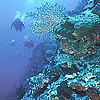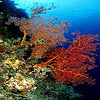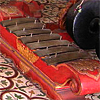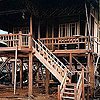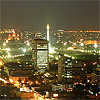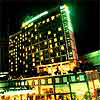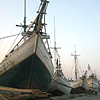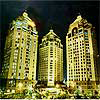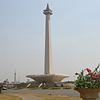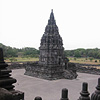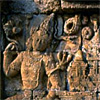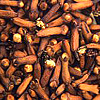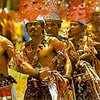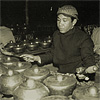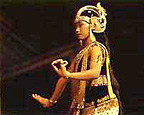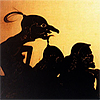The Imigration
All visitors travelling to Indonesia must be in possession of a passport valid for at least six months from the date of arrival and have proof of onward passage. Visas are not required for nationals of Argentina, Australia, Austria, Belgium, Brazil, Brunei, Canada, Chile, Denmark, Egypt, Finland, France, Greece, Germany, Ice land, Ireland, Italy, Japan, Kuwait, Liechtenstein, Luxemburg, Malaysia, Malta, Morocco, Mexico, Netherlands, New Zealand, Norway, Philippines, Singapore, South Korea, Spain, Sweden, Switzerland, Saudi Arabia, Taiwan, Thailand, Turkey, United Kingdom (Great Britain), United States of America, United Emirate Arab and Venezuela.
Visa free entry is also allowed for registered delegates attending a conference which has received official approval For those not belonging to the above categories, tourist visas can be obtained from any Indonesian Embassy or Consulate.
Holders of a Certificate of Identity (CI) from Hong Kong can obtain visas for group travel, with a minimum of 5 persons, from the Consulate General of Indonesia in Hong Kong for visits not exceeding 30 days.
Travel and accommodation should be arranged by a tour operator. Entry and exit must be in groups, and through Soekarno-Hatta International airport of Jakarta, "Ngurah" Rai- Bali or Polonia Medan.
Entry and exit must be made through certain specified gateways:
By air through Jakarta, Bali, Medan, Manado, Biak, Ambon, Surabaya and Batam; By sea through Semarang, Jakarta, Bali, Pontianak, Balikpapan, Tanjung Pinang and Kupang. For other ports of entry and exit special visas are required.
The maximum stay permitted is two months and is not extendible. 
CUSTOM
Indonesian Customs allows on entry a maximum of two liters of alcoholic beverages, 200 cigarettes or 50 cigars or 100 grams of tobacco and a reasonable amount of perfume per adult. Cars, photographic equipment, typewriters and tape recorders must be declared to Customs upon entry and must be reexported. 'prohibited from entry are TV sets, radios, narcotics, arms and ammunition, printed matter in Chinese characters and Chinese medicines.
Advance approval has to be acquired for carrying transceivers and all movie films and video cassettes must be censored by the Film Censor Board. Fresh fruit, plants and animals must have quarantine permits.
There is no restriction on import or export of foreign currencies. However, the export or import of Indonesian currency exceeding Rp.50,000 is prohibited. 
TRANSPORTATION FROM SOEKARNO-HATTA INTERNATIONAL AIRPORT
TO THE CITY V.V
Taxi fares are metered and to the downtown area of the city where most large hotels are located.
The air conditioned airport bus service will cost approximately to any of the five city zones. Hotel limousine services are provided by some of the leading hotels in the city, offering a city-airport-city transportation service on a complimentary basis to hotel guests. At all major airport terminals, inquires about local transportation should be directed to the information counter. 
EXIT
The Government of Indonesia has officially abolished the exit permit required for people leaving the country, effective from August 17, 1992.
Airport tax levied on passengers for international travel for travel within Indonesia regional variations occur. 
TIPPING
Major hotels usually add a 10% service charge to bills. Where it is not included a tip of between 5% to 10% of the bill would be appropriate if the service is satisfactory.
Airport porters expect for a small bag and for bags weighing more than 20 kg.
Tipping taxi and hire-car drivers is not mandatory, but if service has been satisfactory tip is sufficient for a taxi driver, Hire-car drivers would normally expect a larger tip. 
DRESS CODE
Dress is normally informal in Indonesia due to the warm, humid climate and clothing of light fabrics are recommended. Travelling in highland areas is noticeably cooler, however, and carrying a light sweater may prove useful. Accepted attire for men is a shirt and long pants.
A jacket and tie are required for official calls or for more formal occasions. Long sleeved batik or handwoven shirts are acceptable for evening functions.
For ladies, dresses, blouses, and long pants are appropriate. Shorts, halters or tank tops should only be used at sports facilities or on the beach. 
OFFICE HOURS
Business offices are usually open either from 8.00 am to 4.00 pm or 9.00 am to 5.00 pm, with a break for lunch between 12.00 noon and 1.00 pm. but on Saturday many business offices are closed.
Government office hours are from 8.00 am to 4.00 pm from Monday to Friday and on Saturday many Government offices are close. 
BANKING
Normal banking hours are from 8.00 am to 2.30 pm from Monday to Friday. Some bank branches in hotels, however, keep longer hours.
Jakarta has several international banks but money can also be changed at hotel cashiers, and authorized money changers. Daily exchange rates are published in newspapers.
The US dollar is the most readily accepted currency.
Most major tourist destination areas have foreign exchange facilities, but for travel to remote areas, it is advisable to change money and travelers cheques in advance. Credit cards are acceptable only at major hotels, restaurants and travel agencies. 
CURRENCY
The unit of currency is Indonesia Rupiah indicated as IDR.
USD1 is roughly equivalent to IDR 9.980,-.
Foreign currency can be converted at banks and money changers. 
SHOPPING
Major cities in Indonesia have shopping complexes, supermarkets and department stores where prices are fixed. Shops are usually open all week including Sundays.
Shopping hours are usually between 9.00 am and 9.00 pm for department stores and supermarkets in the large cities with shorter hours on Sundays. In smaller cities, shops may be closed between 1.00 pm and 5.00 pm.
Bargaining is customary in small shops and markets, the art of which is to start at half the asking price and slowly increase your offer until a compromise is reached. Remember it helps to smile while bargaining. 
NATIVE SPORT
However, the most popular sports in Indonesia are soccer, badminton, and table tennis. Golf is becoming more and more popular and a number of excellent golf course can be found across the archipelago. Most major hotels have their own tennis and squash courts, swimming pools, health clubs and those at seaside resorts provide equipment for sailing, surfing, scuba diving and windsurfing. There are also a growing number of dive shops which provide necessary equipment and professional services.
Traditional sports in Indonesia include bull races, bull fights, rowing, and unique ram fights, all of which are held as part of special festivities. Silat, a martial art, can be performed as a dance or an exercise and is comparable to Karate or Kung Fu. 
TIMEZONE
Achipelago is spread over three time zones. Western Indonesia Standard Time, which covers the islands of Sumatra, Java & Madura, West and Central Kalimantan is 7 hours ahead of GMT; Central Indonesia Standard Time covers East and South Kalimantan, Sulawesi, Bali and Nusa Tenggara, and is 8 hours ahead of GMT; finally Eastern Indonesia Standard Time, which covers Maluku, and Irian Jaya is 9 hours ahead of GMT. 
ELECTRICITY
Power supply is usually 220 volts/250 cycles in large cities, but 110 volts is still used in some ares. Normal outlets are plugs with two rounded pins. It is advisable to check electricity supplies before using any applian 
HEALTH
International health certificates for smallpox and cholera are not required, except from travellers arriving from infected areas. 
TELEPHONE
Local calls can be made from public phones using coins or pre-paid cards. International calls can be made from public phones with card phone facilities or at any Telkom offices. 
ACCOMMODATION
Indonesia has a wide range of accommodation at competitive rates. International standard, medium and budget hotels; youth hostels; and timeshare apartments are just some of the types of accommodation available. Privately operated motor-homes are also available for rental
 11:10 AM
11:10 AM
 admin
admin



